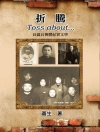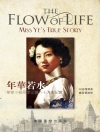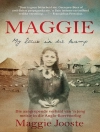In ‘Incidents in the Life of a Slave Girl, ‘ Harriet Jacobs presents a profound firsthand account of the harrowing experiences of enslaved women in the American South. Written in the form of a memoir, Jacobs employs an eloquent yet poignant literary style, blending autobiographical narrative with a compelling call for abolition. The text illuminates the unique struggles faced by female slaves, particularly the sexual exploitation and moral dilemmas that arose from their circumstances. Positioned within the broader context of 19th-century American literature and abolitionism, Jacobs’s work serves as both a testament to resilience and a striking indictment of the institution of slavery. Harriet Jacobs, writing under the pseudonym Linda Brent, was born into slavery in 1813 and became an activist for abolition and women’s rights. Her personal experiences of manipulation and hardship, coupled with the relentless pursuit of autonomy for herself and her children, uniquely prepared her to address the intersection of gender and race in her work. Her deep understanding of the societal constraints faced by enslaved women shaped her narrative, making it an emotive exploration of freedom, motherhood, and dignity. This essential text is highly recommended for scholars and general readers alike, as it not only captures the plight of enslaved women but also challenges the norms of its time. Jacobs’s courageous voice remains a vital contribution to discussions on race, gender, and civil rights in America, offering valuable insights that resonate even today.
Circa l’autore
Harriet Ann Jacobs (1813–1897) stands as a significant figure in American literature, particularly known for her powerful and poignant autobiographical work, ‘Incidents in the Life of a Slave Girl’, which was published under the pseudonym Linda Brent in 1861. Jacobs’ narrative delves into the brutal realities of slavery, particularly the sexual exploitation and struggles faced by female slaves. Born into slavery in Edenton, North Carolina, Jacobs was taught to read and write at a young age, which was uncommon for slaves and later became crucial in her role as an author and abolitionist (Yellin, 1987). Despite inordinate challenges, including years of hiding in a tiny attic space to evade capture after escaping from her master, Jacobs made a successful escape to the North, where she became an active participant in the antislavery movement. The distinctive literary style of Jacobs combines the slave narrative tradition with women’s sentimental novels of the 19th century, deeply impacting readers by personalizing the horrors of slavery and highlighting the strength and resilience required to survive and resist such oppression. Her work is invaluable not only as a historical document but also as a foundational text in African American and Women’s literature. After the Civil War, Jacobs continued her advocacy work by assisting freed slaves through relief efforts and educational projects. In recognition of her contributions, her autobiography remains a seminal work in the canon of American literature and serves as a testament to her life as both a survivor and a pioneer in literature and social justice.












